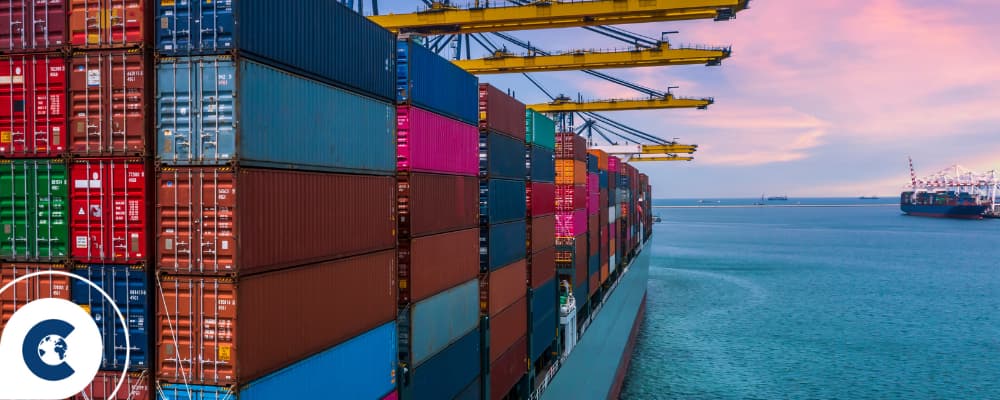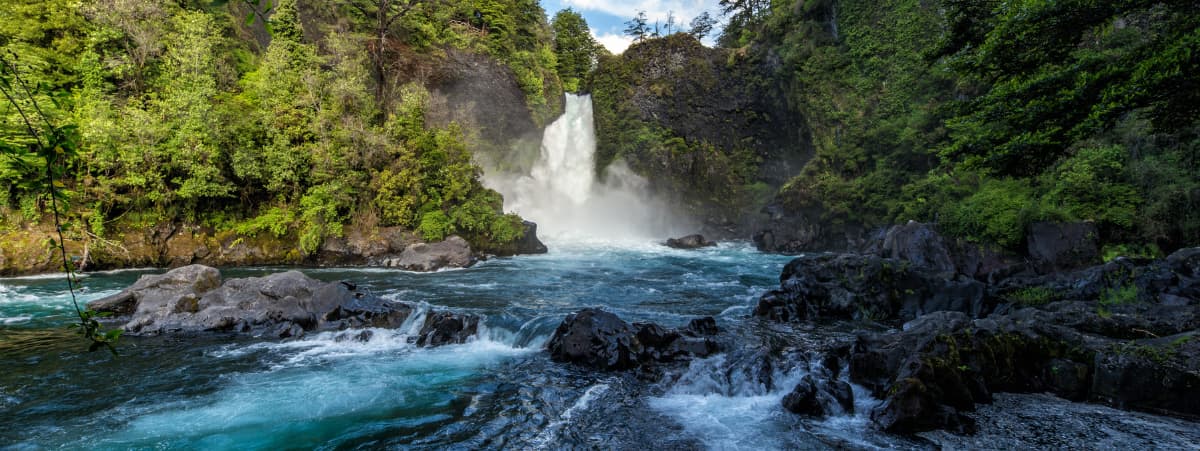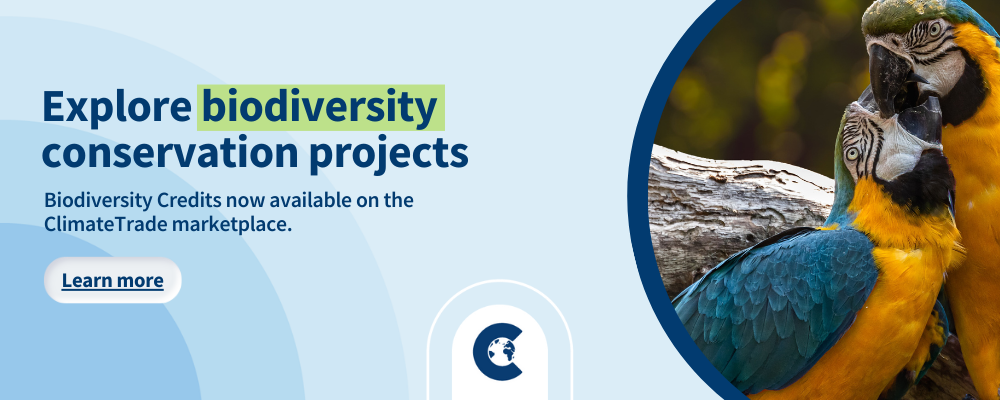Biodiversity loss is the emerging climate change in the transport industry, but biodiversity credits could support the sector’s challenges.
We’re facing a Biodiversity crisis, so let’s get straight to the point. More than half of the global GDP, approximately €40 trillion, is intricately linked to nature. The economic and social costs of inaction in the face of biodiversity loss and ecosystem collapse are enormous. From 1997 to 2011, the world lost an estimated €3.5-18.5 trillion per year in ecosystem services, with an additional €5.5-10.5 trillion per year lost due to land degradation. Biodiversity loss poses a severe risk to EU and global food security, threatening food systems and nutrition. It is also intrinsically linked to and exacerbates climate change, resulting in reduced crop yields, diminished fish catches, increased economic losses from disasters, and the loss of potential new sources of medicine.
In a recent biodiversity credits report by the World Economic Forum and McKinsey & Company, they highlighted the relevance of biodiversity credits as a viable option for harnessing investment for nature conservation:
‘Biodiversity credits are emerging as a possible instrument to drive investment towards positive nature outcomes with the potential to scale up rapidly. Biodiversity credits are verifiable, quantifiable and tradable units of biodiversity restored or preserved over a specified period of time. While the current voluntary market is nascent, it could expand rapidly with the potential to reach $2 billion by 2030 and $69 billion by 2050, bringing large-scale positive impacts if high integrity is maintained. Together with other instruments, biodiversity credits could contribute towards the goals of the Global Biodiversity Framework (GBF), which acknowledges their potential to harness investment for nature. Credits could also play an important role in returning earth systems to within their planetary boundaries.’

What are the main causes of biodiversity loss?
The loss of biodiversity, a critical global issue, is primarily driven by five major causes, each contributing significantly to the ongoing crisis.
First and foremost, changes in land and sea use exert immense pressure on ecosystems, leading to habitat destruction and fragmentation. The relentless expansion of human settlements, agriculture, and infrastructure often results in the displacement of numerous species, disrupting delicate ecological balances.
Secondly, the exploitation of natural resources is a key driver of biodiversity loss. Unsustainable harvesting of timber, overfishing, and the extraction of minerals and other resources directly contribute to the degradation of ecosystems and the decline of numerous plant and animal species. These activities, driven by increasing global demand, often occur without adequate consideration for the long-term consequences on biodiversity.
Global heating, as another driver, exacerbates the biodiversity crisis by altering climatic conditions and disrupting ecosystems. Rising temperatures, altered precipitation patterns, and more frequent extreme weather events directly impact the distribution and behavior of species, leading to shifts in their abundance and, in some cases, pushing them towards extinction.
Pollution, the fourth driver, poses a threat to biodiversity across terrestrial, aquatic, and marine environments. Chemical pollutants, plastic waste, and other contaminants contaminate ecosystems, adversely affecting the health and survival of various species. Polluted air, water, and soil contribute to habitat degradation and pose direct threats to the biodiversity of affected regions.
Finally, the spread of invasive species, often facilitated by human activities, is a fifth major driver of biodiversity loss. Non-native species introduced to new environments can outcompete and displace native flora and fauna, disrupting established ecological relationships. This process, known as biological invasion, poses a significant threat to the stability and diversity of ecosystems worldwide.

What is transportation’s role in the biodiversity crisis?
As greenhouse gas emissions have doubled since 1980, climate change has emerged as an enormous threat to ecosystems globally. The transport sector significantly contributes to this challenge through its role in increased global trade and travel. The extensive movement of goods and people across borders facilitates the inadvertent introduction of alien species into new environments, disrupting native ecosystems and compounding the negative effects on biodiversity.
The construction, operation, and maintenance of transport assets further amplify the impact on biodiversity, particularly due to the reliance on materials extracted from biodiversity-rich regions. This extraction often leads to habitat destruction, loss of critical wildlife corridors, and disruption of ecosystems that are already under stress.
Efforts to address biodiversity loss within the shipping industry are intricately linked to the broader fight against climate change. A notable example is the reduction of underwater radiated noise (URN), a form of acoustic pollution with detrimental effects on marine life. By addressing URN, not only do shipping companies contribute to biodiversity conservation by safeguarding marine ecosystems, but they also align with crucial greenhouse gas reduction targets.
In June 2023, The U.N. adopted the world’s first treaty to protect the high seas and preserve marine biodiversity in international waters, marking a milestone after nearly 20 years of effort,
What are biodiversity hotspots?
Wildlife populations have plummeted by an average of 69% between 1970 and 2018, a decline driven by factors such as habitat loss, pollution, and climate change.
Researchers have identified 36 biodiversity hotspots – areas of Earth that are rich in life but threatened by human behavior – that require the most urgent protection. They include the Sundaland, the Caucasus, Wallacea and the forests of eastern Australia.
To be considered a hotspot, an area must have a large portion of unique plant life not found anywhere else on Earth, and it must be in danger, with less than 30% of the original native vegetation still present.

The International Union for Conservation of Nature (IUCN) Red List highlights the urgency of protecting the identified hotspots. While the focus has traditionally been on climate change metrics like CO2 equivalent, setting biodiversity conservation targets remains a challenge due to the lack of a universally accepted measurement standard.
The transport industry and the voluntary carbon market
The Voluntary Carbon Market (VCM) presents a unique opportunity for transport companies to actively address the biodiversity crisis while pursuing their net-zero strategies. Recognizing the significant challenges faced by the transport sector as a vital yet hard-to-abate industry, the VCM allows these companies to go beyond conventional carbon offsetting by incorporating biodiversity credits into their sustainability initiatives. By participating in the VCM, transport companies can invest in projects that not only reduce carbon emissions but also contribute to biodiversity conservation and ecosystem restoration. Purchasing biodiversity credits enables these companies to support initiatives such as reforestation, habitat preservation, and sustainable land-use practices.
How can the transport industry integrate biodiversity credits as part of their net-zero strategy?
The transportation sector can strategically incorporate biodiversity credits into its net-zero strategy through various use cases, providing a comprehensive approach to conservation and sustainability. The following use cases come from the World Economic Forum’s Biodiversity Report, December 2023.
1 – In the first use case, companies in the transportation sector may purchase biodiversity credits alongside nature-based solutions (NbS) to enhance carbon credits. This approach ensures that carbon and biodiversity outcomes are coordinated, mitigating the risk of carbon credits negatively impacting nature. By issuing carbon credits with a biodiversity “premium” or separately, projects can explicitly price biodiversity improvements, promoting ecological health and contributing to nature-related targets.
2 – In the second use case, companies can use biodiversity credits to finance improvements in natural capital within their value chain, securing access to vital ecosystem services. For instance, a transportation company relying on local water supply could invest in biodiversity credits to support the health of ecosystems providing this resource. The credits add a layer of verification and third-party assurance, enhancing the company’s nature risk management.
3 – The third use case involves companies contributing to global nature goals by purchasing biodiversity credits to protect and restore nature beyond their direct impacts. For example, a car manufacturer might invest in credits for the restoration of a globally threatened habitat, aligning with global biodiversity goals and enhancing the company’s business value.
4 – In the fourth use case, companies can offer products and services bundled with biodiversity credits, allowing consumers to support positive nature outcomes through their purchases. This approach aligns with consumer preferences and willingness-to-pay, providing a tangible and verifiable connection between the product and nature improvement.
While these use cases present opportunities for the transportation sector to integrate biodiversity credits into their net-zero strategy, it’s essential to acknowledge the contested nature of the fifth use case. This involves taking responsibility for unmitigated biodiversity impacts, and its applicability is subject to ongoing debate and requires additional market infrastructure development. Transportation companies should carefully consider these use cases, assess their specific circumstances, and leverage biodiversity credits alongside other instruments to support their net-zero goals.
Read our feature in Mongabay – ‘Biodiversity credits market must learn from carbon offset mistakes’








